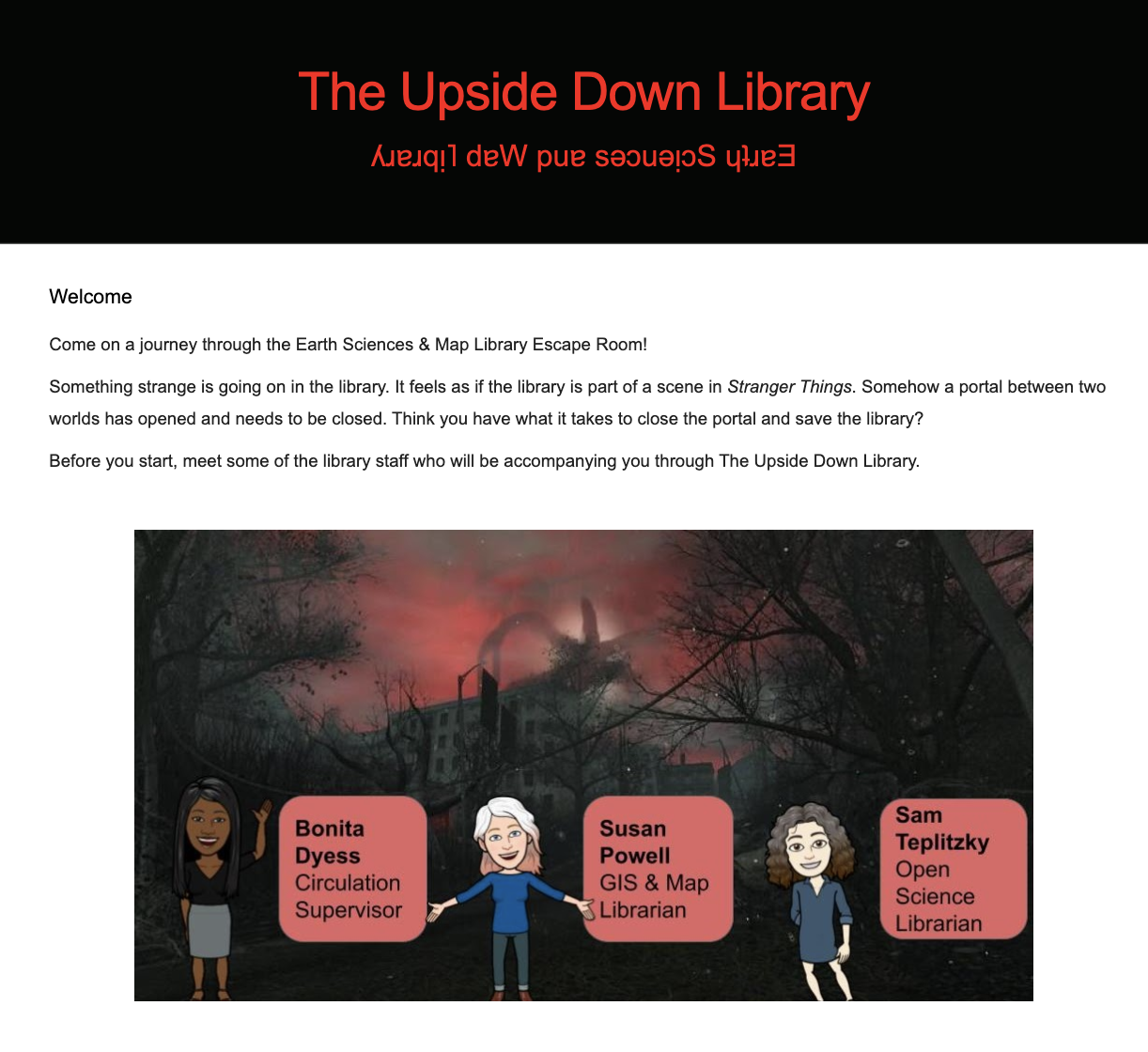Science & Engineering Libraries
Wikiphiliacs, Unite! (At our Wikipedia Editathon, on Valentine’s Day, 2024)
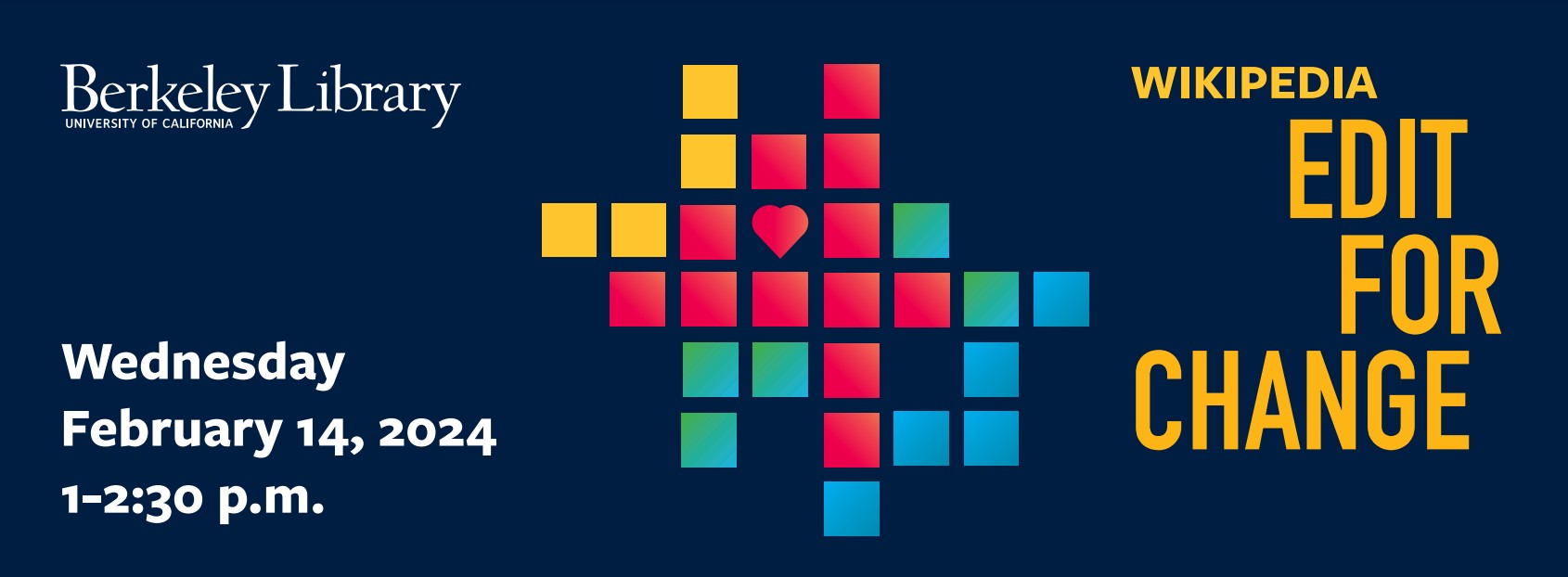
I am a proud Wikiphiliac. At least, according to the Urban Dictionary, which defines Wikiphilia as “a powerful obsession with Wikipedia”. I have many of the signs it warns of, including “accessing Wikipedia several times a day…spending much more time on Wikipedia than originally intended [and]… compulsively switching to other Wikipedia articles, using the hyperlinks within articles, often without obtaining the originally sought information and leaving a bizarre informational “trail” in his/her browsing history” (but that last part is just normal life as a librarian).
How else do I love Wikipedia? Let me count the ways! As a librarian, I always approach crowd-sourced information with a critical eye, but I also admire that Wikipedia has its own standards for fact-checking, and in fact some topics are locked to public editing. It takes its mission very seriously. It also has an accessible and neutral tone. Especially when I want to learn about a technical topic, it can give me a straightforward and helpful way to approach it. I also use it pretty routinely as a way to look at collections of sources about a topic; when I was a medical librarian, I was asked for data on the condition neurofibromatosis, and at that time the best basic links I found were in the references for the Wikipedia article. Last and maybe most importantly, the fact that anyone can edit is a huge strength…with challenges. Wikipedia openly admits its content is skewed by the gender and racial imbalance of its editors, and knowing this is part of approaching it critically, but it also means that IT CAN CHANGE, and WE CAN CHANGE IT.
Given that philia, a word taken from Ancient Greek (according to the philia Wikipedia article), means affection for or love of something, it’s fitting that our 2024 Wikipedia Editathon is part of UC’s Love Data Week, and happens on Valentine’s Day. If you would like to learn to contribute to this amazing resource, and perhaps even help diversify its editorial pool, we can get you started! There isn’t yet a Wikipedia page on Wikiphilia, but maybe you could create one! There already is a podcast series…
If you’re interested in learning more, we warmly welcome you and invite you to join us on Wednesday, February 14, from 1-2:30 for the 2024 UC Berkeley Libraries Wikipedia Editathon. No experience is required—we will teach you all you need to know about editing! (but, if you want to edit with us in real time, please create a Wikipedia account before the workshop—information on how to do that is on the registration page). The link to register is here, and you can contact any of the workshop leaders with questions. We hope you will join us, and we look forward to editing with you!
NOTE: the Wikipedia Editathon is just one of the programs that’s part of the University of California’s Love Data Week 2024! Don’t forget to check out all the other great UC Love Data Week offerings—this year UC Berkeley Librarians are hosting/co-hosting SIX different sessions! Here are those UCB-led workshop links, and the full calendar is linked here:
Thinking About and Finding Health Statistics & Data
GIS & Mapping: Where to Start
Cultivating Collaboration: Getting Started with Open Research
Code-free Data Analysis
Wikipedia Edit-a-thon
Getting Started with Qualitative Data Analysis
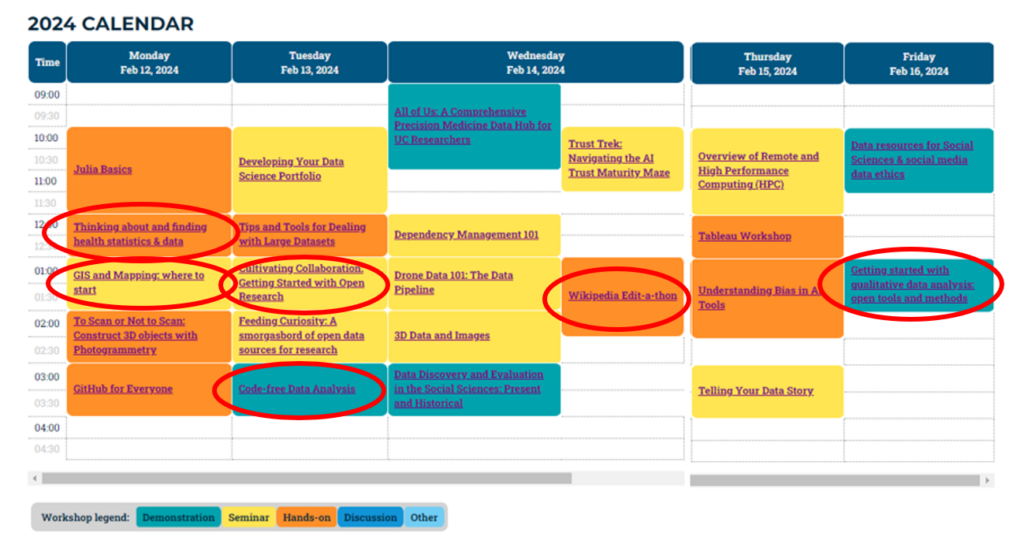
Free large-format scanning for UC Berkeley students, faculty, and staff
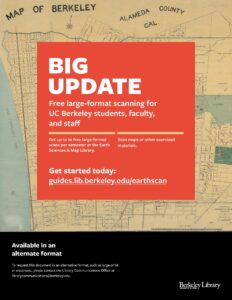 Members of the UC Berkeley community can now get up to 10 free large-format scans per semester at the Earth Sciences & Map Library! This can include maps or other large, flat materials. Scans over the free allotment are $10 each. For walk-in patrons not affiliated with the university, the cost is $25 per scan. Get more information about large-format scanning, or visit the library to start your scanning project.
Members of the UC Berkeley community can now get up to 10 free large-format scans per semester at the Earth Sciences & Map Library! This can include maps or other large, flat materials. Scans over the free allotment are $10 each. For walk-in patrons not affiliated with the university, the cost is $25 per scan. Get more information about large-format scanning, or visit the library to start your scanning project.Over 200 students “escape” the Earth Sciences and Map Library
For the third year in a row, we challenged undergraduates in Earth & Planetary Sciences and Geography courses to “escape” from the library by answering a series of questions related to the library’s platforms and services.
Over 200 students participated this year from September 1 – 30, 2023. At the conclusion of the contest, five winners were randomly drawn from eligible entries to receive prizes.

Try it!
Reading about something is never the same as a hands-on experience. The room remains open for visitors at the following link:
ENTER THE ESCAPE ROOM
The Escape Room is restricted to UC Berkeley affiliated students, staff and faculty. A “berkeley.edu” email address is required to participate.
History
Read about the creation of the 2021 Escape Room in this blog written by a member of the Earth Sciences & Map Library staff.
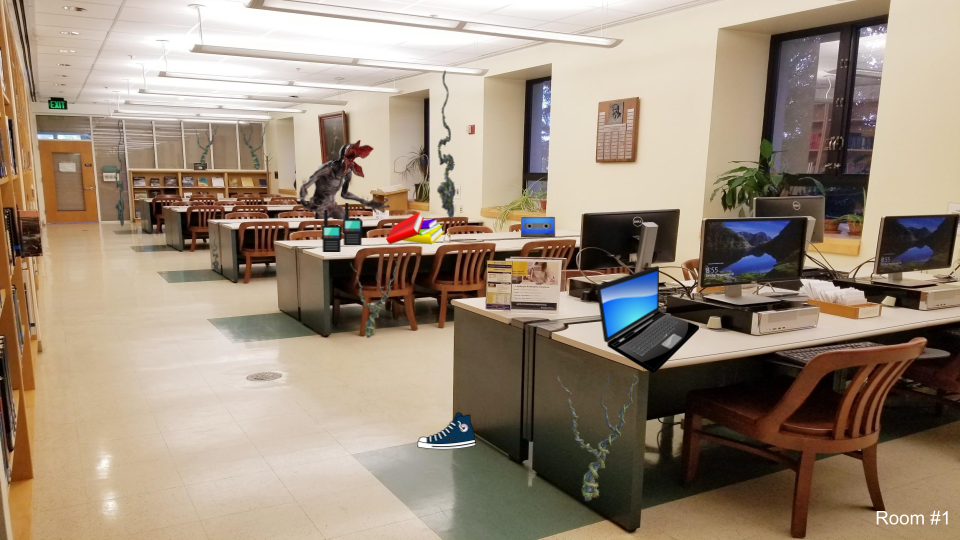
Updates & Audience
The 2023 Virtual Escape Room continues prior year’s Stranger Things theme with relevant updates to reflect changes in the library catalog as well as staffing and hours updates.
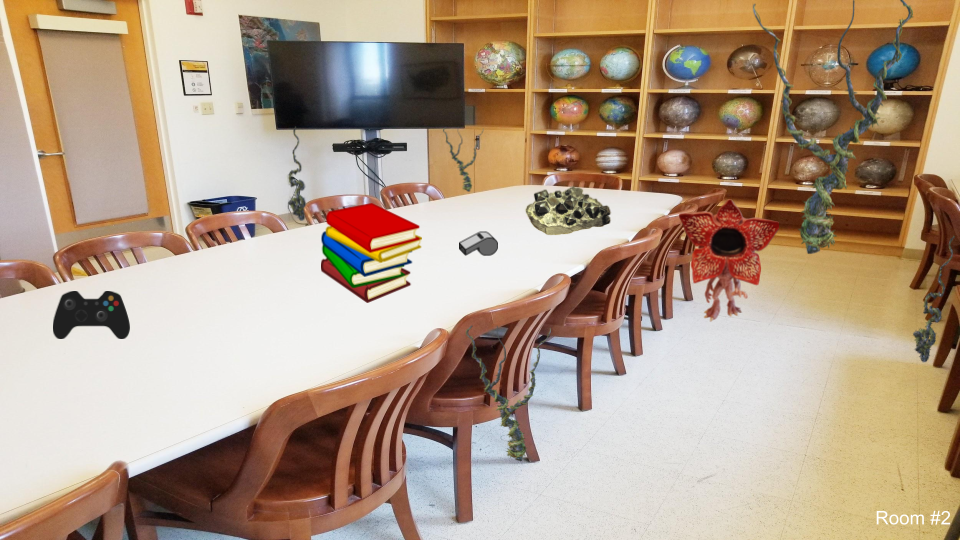
The Escape Room is open to all, but targets undergraduates taking EPS and Geography courses. In order to encourage camaraderie among departments housed within McCone Hall, affiliated students, faculty, and staff are encouraged to participate in the Escape Room’s simultaneous Battle of McCone competition. The main majors–Earth and Planetary Sciences and Geography–with the highest number of players will earn bragging rights as the winner of the friendly competition!
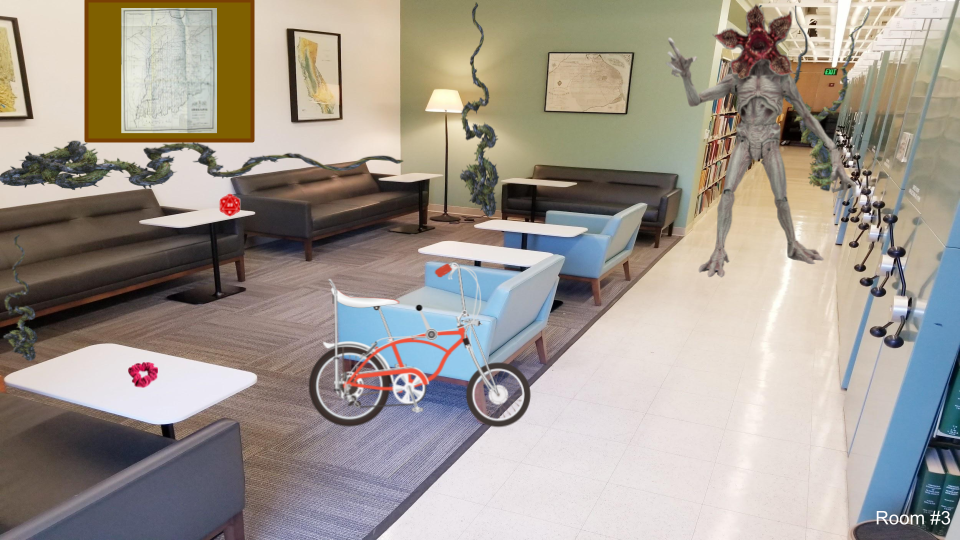
Questions?
We welcome questions and comments about the Earth Sciences & Map Library Virtual Escape Room. Email eart@library.berkeley.edu.
“Doris Sloan: Geologist, Educator, and Environmental Activist,” oral history release
New oral history: Doris Sloan
Video clip from Doris Sloan’s oral history on living in the Bay Area, on deep time, and on thinking like a geologist:
Doris Sloan is a geologist and paleontologist who earned her PhD at UC Berkeley and who taught, wrote, and engaged in environmental activism and education throughout the Bay Area, across California, and beyond. Sloan and I recorded nine hours of her then 92-year life history at her home in Berkeley, California, in May 2022. Our four recording sessions resulted in a 162-page oral history volume that includes an appendix of photographs with family as well as documents from her efforts in the early 1960s to stop PG&E’s construction of a nuclear power plant atop Bodega Head, under which runs the seismic San Andreas fault. Today, the coastal outcrop of Bodega Head is preserved as part of California’s scenic 17-mile-long Sonoma Coast State Park.
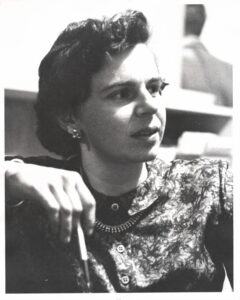
to Preserve Bodega Head and Harbor (NCAPBHH).
Sloan’s involvement in the “Battle for Bodega Head” helped inspire her later career as a geologist and teacher—a career she began by returning to graduate school as a mother in her early forties with children still at home. Sloan overcame numerous challenges, including gender discrimination in what were then male dominated departments and academic fields, to earn her MS in Geology in 1975 and her PhD in Paleontology in 1981. Her dissertation was an ecostratigraphic thesis on the sedimentary fossils of tiny creatures that once lived the San Francisco Bay. For many years, Sloan taught research-driven senior seminars in Environmental Science at UC Berkeley as well as geology courses for UC Extension. She lectured on travel excursions and field trips around California and across much of the Earth. Sloan became a board member with Save the Bay and a founding member of Citizens for East Shore Parks. In 2006, she published with UC Press the popular California natural history guide, Geology of the San Francisco Region. In her rich oral history, Sloan discussed all of the above, with details on her formative childhood experiences, her environmental and anti-nuclear activism, her experiences as a female geology graduate student at UC Berkeley, as well as her diverse teaching career.
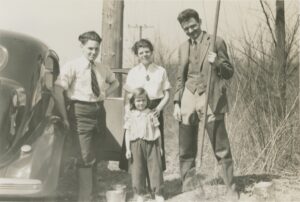
Doris Sloan was born in October 1930, in Freiburg, Germany. At age four, she and her family fled Germany after the Nazis removed her father, preeminent embryologist Viktor Hamburger, from the faculty at the University of Freiburg because of his Jewish ancestry. Her family settled in Missouri after her father secured a faculty appointment at Washington University in St. Louis. As a young girl, Sloan accompanied her father and his embryology students on field research trips to collect salamander eggs. She also shared fond memories of youthful summers working in Woods Hole on Cape Cod at the Marine Biological Laboratory. Sloan attended Bryn Mawr College from 1948 to 1951, where she began attending Quaker meetings. Upon her mother’s deteriorating health, Sloan returned to St. Louis and graduated in 1952 from Washington University with a BA in Sociology. In that same year Sloan moved to San Francisco, California, with her then-husband, with whom she had four children. In 1957, she and her young family moved to Sonoma County, where she was neighbors with Peanuts cartoonist Charles Schulz. It was there in Sonoma County where, in the interests of protecting her children from nuclear radiation and preserving the beauty of the Sonoma Coast, that Sloan began her environmental activism that would, among other experiences, inspire her later career as a geologist and teacher.
Video clip from Doris Sloan’s oral history about her role in the “Battle of Bodega Head, Part 1:
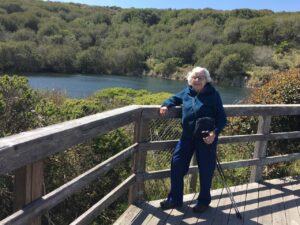
Sloan detailed her engagements in the multi-year “Battle of Bodega Head” that, in 1964, successfully stopped PG&E’s construction of a nuclear power plant on Bodega Head. After being told by an official from California’s Office of Atomic Energy Development and Radiation Protection to let go of concerns about the forthcoming nuclear plant and “leave it to the experts,” Sloan enlisted in the activist organization called the Northern California Association to Preserve Bodega Head and Harbor (NCAPBHH)—a name others created and she described as “dreamt up on a Friday night after too many beers.” The Association included an eclectic mix of anti-nuclear citizen activists that included communist chicken farmers, libertarian land owners, conservative cattle ranchers, Bodega fisherman, UC Berkeley professors, Sierra Club members, and jazz musicians and songwriters. In her role as Sonoma County Coordinator of NCAPBHH, Sloan also collaborated with an internationally recognized geophysicist and geologist named Pierre Saint-Amand. Fortuitously, on a rainy and wind-swept day, Sloan accompanied Saint-Amand on a clandestine and consequential visit to the “Hole in the Head,” the site on Bodega Head where PG&E had already drilled a deep pit into granite rock to place its nuclear reactor. It was on that visit, while looking into that hole, that Saint-Amand and Sloan discovered evidence of the San Andreas fault running directly through the reactor’s containment site, a discovery that eventually halted further nuclear construction there.
Video clip from Doris Sloan’s oral history about her role in the “Battle of Bodega Head, Part 2:
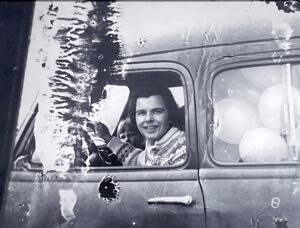
As Sloan recalled about their activist victory in the early 1960s, “to have a group of citizens win out over a major institution was really pretty unique. … Bodega was a very important story at the very beginning of a huge cultural shift for not only environmental matters on nuclear energy, but in so many other ways, too. Basically, citizen involvement at every level, from students to housewives. And to be a part of that, I look back on that and think, wow, how could anybody have been so lucky in so many ways?” The story of this citizen-led anti-nuclear activism has been told elsewhere, including in Oral History Center interviews with David Pesonen and Joel Hedgpeth, as well as by nuclear historians J. Samuel Walker and UC Berkeley alumnus Thomas Wellock. Sloan’s storytelling on her personal role in the “Battle of Bodega Head”—like launching over a thousand helium-filled balloons from Bodega Head to the accompaniment of live jazz playing “Blues Over Bodega”—adds both flourish and important details to the eventual successes of NCAPBHH.
Sloan’s involvement at Bodega Head played a crucial role in launching the next phase of her life as a geologist and teacher. After moving with her children to Berkeley in 1963, Sloan worked for the Friends Committee on Legislation, a Quaker lobbying group. Yet, by the early 1970s, Sloan’s long-standing fascination of nature, a desire to experience more of it, and her memory of discovering fault seams on Bodega Head led her to take UC Extension courses on geology taught high up in the Sierra Nevada’s Emigrant Wilderness by a remarkable UC Berkeley professor named Clyde Wahrhaftig. Wahrhaftig eventually became a significant mentor and friend to Sloan on her academic journey, as were UC Berkeley geologists Garniss Curtis and William B.N. (Bill) Berry. In her oral history, Sloan shares many joys from her field research and academic experiences at Berkeley, including mapping rock formations in California’s Mazourka Canyon, communing with ancient bristlecone pines in the White Mountains, learning about limestone deposition in Florida, a fascinating question about an imaginary dinosaur civilization from Walter Alvarez during her PhD oral examination, and her own work deciphering the sedimentary mysteries of fossils from mud under the San Francisco Bay. Sloan also shared some of the challenges she faced in the late 1970s as one of the few women in Berkeley’s geology and paleontology departments that, by her account, then included more than a few male chauvinistic dinosaurs.
Video clip from Doris Sloan’s oral history about Clyde Wahrhaftig, a UC Berkeley geologist, mentor, and friend:
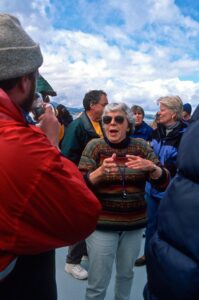
Sloan’s oral history also explores her ensuing years as a teacher, travel guide, author, and environmental activist. Sloan discussed several senior research seminars in Environmental Studies that she taught at UC Berkeley, some records of which are preserved in UC Berkeley’s Library including East Bay Parklands: Planning and Management (1978), Seismic Safety in Berkeley (1979), San Pablo Bay: An Environmental Perspective (1980), and Hazardous Substances: A Community Perspective (1984). Sloan recorded stories and samples from lectures she delivered in her UC Extension geology courses and in her field classes for numerous organizations, including the Oakland Museum, Sierra Club, the Point Reyes National Seashore Association, and the Yosemite Association. And she shared some of her travel experiences as a guide for Cal Alumni groups on journeys all across the Earth, from the Himalayas to Central Asia, and from South America to Scandinavia. Sloan also spoke about her local environmental activism as a board member of Save The Bay, as a founding member of Citizens for East Shore Parks, and on her friendship with Save The Bay co-founder Sylvia McLaughlin, including efforts to secure what is now named as McLaughlin Eastshore State Park.
Doris Sloan’s enlightening oral history records marvelous stories from the first ninety-two years of her remarkable life—from fleeing Nazi Germany to summers in Woods Hole; from raising children in northern California to stopping construction of a nuclear power plant on the San Andreas fault; from graduate school in her forties at UC Berkeley to lecturing across California and much of the world. I am honored to have become one of Doris’s friends, and I’m lucky for the opportunity to become one of her students. Now, with the publication of Doris Sloan’s oral history, you also have the chance to learn from her deep wisdom and experience.
Video clip from Doris Sloan’s oral history about the Bay Area’s complicated geology:
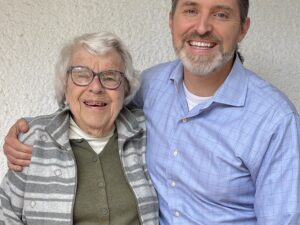
ABOUT THE ORAL HISTORY CENTER
The Oral History Center of The Bancroft Library preserves voices of people from all walks of life, with varying political perspectives, national origins, and ethnic backgrounds. We are committed to open access and our oral histories and interpretive materials are available online at no cost to scholars and the public. You can find our oral histories from the search feature on our home page. Search by name, keyword, and several other criteria. Sign up for our monthly newsletter featuring think pieces, new releases, podcasts, Q&As, and everything oral history. Access the most recent articles from our home page or go straight to our blog home.
Escape the Earth Sciences & Map Library!
Last year we challenged undergraduates in the Earth & Planetary Sciences and Geography Departments to “escape” from the library by answering a series of questions related to the library’s platforms and services.
The Virtual Escape Room is back again this fall!
Details
ENTER THE ESCAPE ROOM
The Escape Room is open August 22 – September 15, 2022.
The Escape Room is restricted to UC Berkeley affiliated students, staff and faculty. A “berkeley.edu” email address is required to participate.
History
Following the pandemic closures, the Earth Sciences & Map Library reopened in August of 2021. With the start of that new academic year, the Earth Sciences & Map Library staff wanted to welcome back students and remind them of our available library services and spaces. Read about the creation of the 2021 Escape Room in this blog written by a member of the Earth Sciences & Map Library staff.

Updates & Audience
The 2022 Virtual Escape Room continues last year’s Stranger Things theme with relevant updates to reflect changes in the library catalog as well as staffing and hours updates.
The Escape Room is open to all, but targets undergraduates taking EPS and Geography courses. In order to encourage camaraderie among departments housed within McCone Hall, affiliated students, faculty, and staff are encouraged to participate in the Escape Room’s simultaneous Battle of McCone competition. The main majors–Earth and Planetary Sciences and Geography–with the highest number of players will earn bragging rights as the winner of the friendly competition!

Try it!
Reading about something is never the same as a hands-on experience. Now that you have read all about our virtual escape room try it out for yourself! Only students are eligible for prizes, but all @berkeley affiliates are welcome to participate!

Questions?
We welcome questions and comments about the Earth Sciences & Map Library Virtual Escape Room. Email eart@library.berkeley.edu or tweet us @geolibraryucb
Online Reference Services and Research Help
The Library’s reference services have moved online at least through April 7th. Please see Remote Resources for UC Berkeley Library Users for the latest information on library services and resources. During this time, the Engineering & Physical Sciences Libraries are offering several ways to get reference service and research help.
Contact a Librarian
Librarians are available Monday – Friday during business hours to answer any questions you might have. Email one of us with your question or click the link to schedule an online meeting. If you’re not sure who to contact, feel free to use the Ask a Science Librarian form.
- Mathematics, Statistics, Computer Science: Brian Quigley (email; schedule a meeting)
- Civil & Environmental Engineering, Industrial Engineering & Operations Research, Mechanical Engineering, Nuclear Engineering: Lisa Ngo (email; schedule a meeting)
- Bioengineering, Electrical Engineering, Materials Science, Research Data Management: Anna Sackmann (email; schedule a meeting)
- GIS & Maps, Geography: Susan Powell (email; schedule a meeting)
- Open Science, Earth & Planetary Science: Sam Teplitzky (email; schedule a meeting)
- Chemistry, Chemical & Biomolecular Engineering, Physics, Astronomy: Kristen Greenland (email; schedule a meeting)
24/7 online help
Chat: Chat with a librarian. The chat service is staffed by Berkeley librarians, but at peak service times or off-hours you may be connected with a librarian from another academic institution.
Online guides, tutorials and videos:
- Library Research Guides – Librarian experts have created these pages to help you find resources and services by subject, course and topic at UC Berkeley.
- Remote Resources for UC Berkeley Library Users – Access expert help and remote services through this guide to library resources.
Connecting from off campus
If you are not on campus, use EZProxy or the VPN (VPN users: choose Library Access – Full Tunnel rather than the default Split Tunnel) to authenticate yourself as a Berkeley student, faculty, or staff to access online books, journals, databases, and other resources.
If a desired resource is not available as a full-text version online, Berkeley students, faculty, and staff may be able to place a request for a digital copy through our Interlibrary Borrowing Service. Check their website for current information on what is available through this service.
Data Publishing with Dryad Digital Repository

The California Digital Library (CDL) recently partnered with Dryad to provide enhanced data publishing and curation support for researchers. Dryad is a free service that enables researchers to archive and make publicly available their research data for the long term. Dryad replaces Dash, which was the data repository previously available to the university.
Datasets published in Dryad receive a Digital Object Identifier (DOI) and a citation, both of which provide the data a persistent location, identification, and makes the data citable in future use. Additionally, Dryad fulfills many of the data sharing requirements stipulated by funders and publishers, many of whom may require that data be made freely and openly available at the end of a project or upon publication.
Publishing data to Dryad is relatively quick and easy. As a UC Berkeley researcher, begin the upload process by signing in to Dryad using your ORCID ID. The data is then reviewed by a curator, meaning the data is reviewed and enriched to be Findable, Accessible, Interoperable, and Reusable or FAIR. By making your data FAIR, others in your area of expertise will be able to locate, understand, and potentially reuse the data you generated. Data that is made easily findable and publicly available contributes to raising the quality of scholarly output by making the process of data production transparent. Funders require data publishing to better leverage research dollars and publishers require data publishing to enhance the quality of scholarly literature.
Please visit datadryad.org to explore published datasets. If you have any questions about preparing your data for publication or using Dryad, please contact researchdata@berkeley.edu.
2019 IgNobel Prize Winners Announced A While Ago
Hello,
Once again, we have the IgNobel prizes. Here’s a list of the 2019 winners; links to the actual, real research papers are here.
MEDICINE PRIZE [ITALY, THE NETHERLANDS]
Silvano Gallus, for collecting evidence that pizza might protect against illness and death, if the pizza is made and eaten in Italy.
MEDICAL EDUCATION PRIZE [USA]
Karen Pryor and Theresa McKeon, for using a simple animal-training technique— called “clicker training” —to train surgeons to perform orthopedic surgery.
BIOLOGY PRIZE [SINGAPORE, CHINA, GERMANY, AUSTRALIA, POLAND, USA, BULGARIA]
Ling-Jun Kong, Herbert Crepaz, Agnieszka Górecka, Aleksandra Urbanek, Rainer Dumke, and Tomasz Paterek, for discovering that dead magnetized cockroaches behave differently than living magnetized cockroaches.
ANATOMY PRIZE [FRANCE]
Roger Mieusset and Bourras Bengoudifa, for measuring scrotal temperature asymmetry in naked and clothed postmen in France.
CHEMISTRY PRIZE [JAPAN]
Shigeru Watanabe, Mineko Ohnishi, Kaori Imai, Eiji Kawano, and Seiji Igarashi, for estimating the total saliva volume produced per day by a typical five-year-old child
ENGINEERING PRIZE [IRAN]
Iman Farahbakhsh, for inventing a diaper-changing machine for use on human infants.
ECONOMICS PRIZE [TURKEY, THE NETHERLANDS, GERMANY]
Habip Gedik, Timothy A. Voss, and Andreas Voss, for testing which country’s paper money is best at transmitting dangerous bacteria.
PEACE PRIZE [UK, SAUDI ARABIA, SINGAPORE, USA]
Ghada A. bin Saif, Alexandru Papoiu, Liliana Banari, Francis McGlone, Shawn G. Kwatra, Yiong-Huak Chan, and Gil Yosipovitch, for trying to measure the pleasurability of scratching an itch.
PSYCHOLOGY PRIZE [GERMANY]
Fritz Strack, for discovering that holding a pen in one’s mouth makes one smile, which makes one happier — and for then discovering that it does not.
PHYSICS PRIZE [USA, TAIWAN, AUSTRALIA, NEW ZEALAND, SWEDEN, UK]
Patricia Yang, Alexander Lee, Miles Chan, Alynn Martin, Ashley Edwards, Scott Carver, and David Hu, for studying how, and why, wombats make cube-shaped poo.
New Resource: DynaMed Plus
DynaMed Plus is an evidence-based clinical reference tool. Use it to find the latest evidence-based information in almost two dozen content areas including allergy, dermatology, endocrinology, infectious diseases, neurology, obstetrics, oncology, sport medicine, and more. Updated daily, DynaMed Plus content is written by physicians and researchers.
Features include:
- Topic overviews and recommendations based on the most current evidence
- Guidelines from prominent organizations (e.g., American Academy of Pediatrics, American Diabetes Association, American Optometric Association)
- Drug information from Micromedex
- Graphics and images
- Health-related calculators (e.g., Injury Severity Score, Lean Body Weight)
- Mobile app
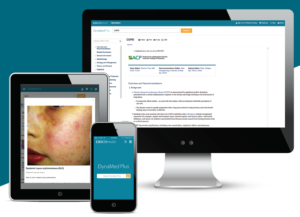
Publisher Data Requirements Revisited
In May and September of 2017, the Library wrote posts (read them here and here) about a number of publisher research data policies. Over the last year, publishers have engaged in conversations with institutions, funders, and not-for-profit organizations to examine how they can better shape and influence the sharing of research data.
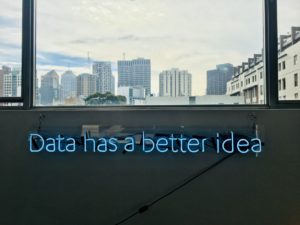
To accompany their data sharing policies and recommendations, publishers like Springer Nature and Elsevier recently developed their own research data services to better assist researchers who are preparing their data to be published alongside a manuscript. They now provide individual guidance (for a fee) and repositories in which to deposit and share data. Please talk to a consultant at UC Berkeley’s Research Data Management program about the guidance we can provide along with University of California supported data sharing options.
Elsevier continues to communicate about research data through a series of principles (data should be made available free of charge wherever possible with minimal reuse restrictions; by enabling effective reuse of data we’re finding efficiencies and preventing duplication of effort). These principles map to a series of policies. The policies speak to how Elsevier will support and encourage researchers when sharing data. Elsevier’s research data guidelines, which remain largely unchanged since last year, prescribe how and when researchers will share their data. Elsevier’s journals are assigned to one of five research data guidelines, which have slight variations in language and range from “encouraged to deposit research data” to “required to deposit research data.”
When submitting to an Elsevier journal, be sure to check the individual journal’s Guide for Authors, which is located on the journal homepage. Elsevier does not maintain a master list of journals mapped to the five research data guidelines. Your subject librarian can provide guidance if you need more information about the data publishing policies from a specific Elsevier title. If you don’t know where you will submit your research, it’s best to prepare for the most rigorous data policy by adhering to a data management plan throughout the course of your work.
Springer Nature’s data publishing policies follows the same, four tiered structure they developed in 2017; however, they’ve added more nuanced requirements within each tier for the life sciences and non life sciences. Check here to see the publisher’s list of journals and their assigned data publishing policy.
Wiley applies one of three data sharing policies to their journals: encourages data sharing; expects data sharing; and mandates data sharing. The publisher has created an author compliance tool, which enables researchers who are submitting papers to one of the publisher’s journals to check what they need to do with their data to be in compliance with their funder, institution, and journal. For example, if your research is funded by the NIH, you work at a University of California institution, and would like to publish in Bioengineering and Translational Medicine, you’ll learn that the journal encourages you to share your data, the NIH requires you to share your data, and the university does not have a policy. In cases like this, you need to default to the entity that requires the most sharing. In this case, you would share your data as stipulated by the NIH.
Wiley’s author compliance tool points out the gaps in policy that exist for researchers, especially in the United States. Data sharing policies differ widely between institutions, publishers, and funders which leads to confusion for the researcher. In general, when planning research and communicating your results, take the Open Science approach, which advocates for showing your work and sharing your work in the name of advancing science. By thoroughly documenting your data and research process, others are better able to understand your work and potentially utilize the data for another research purpose. The Open Science approach supports transparency and reuse, which results in better science and more rapid advances. If you would like more information about preparing your data to be shared with others, please contact the Research Data Management Program.
